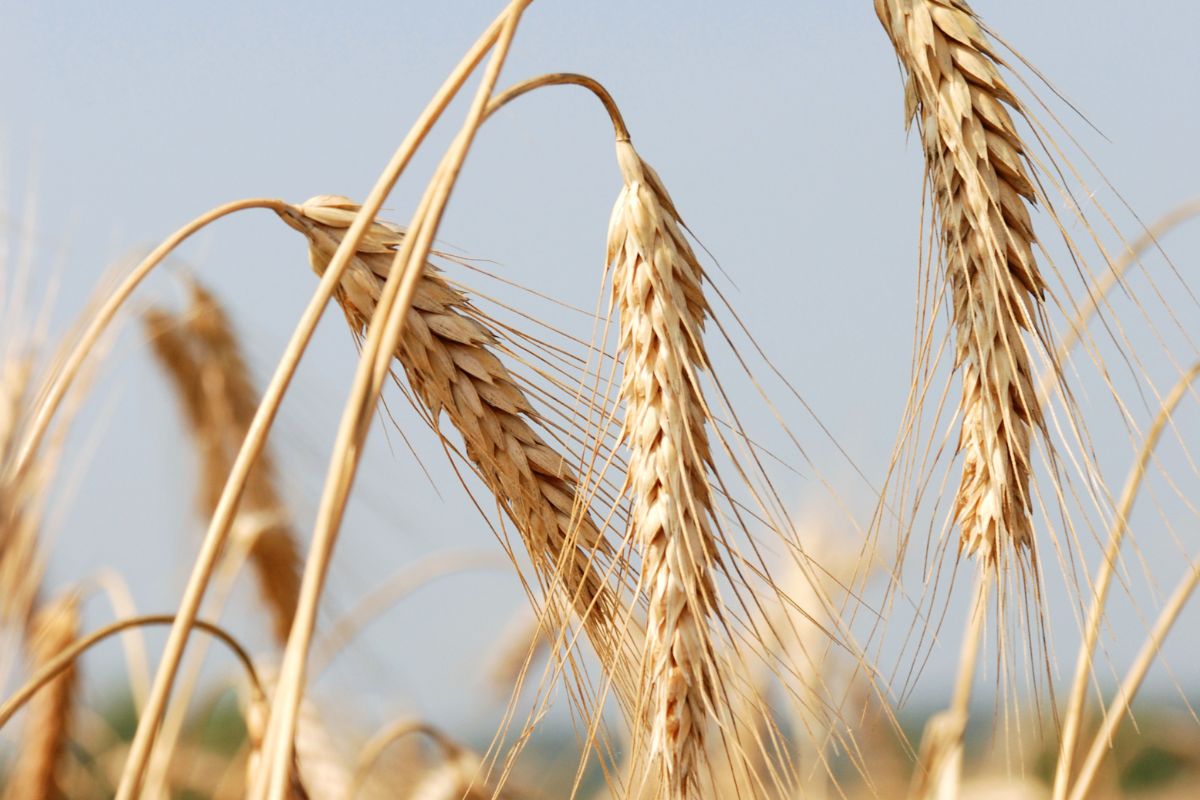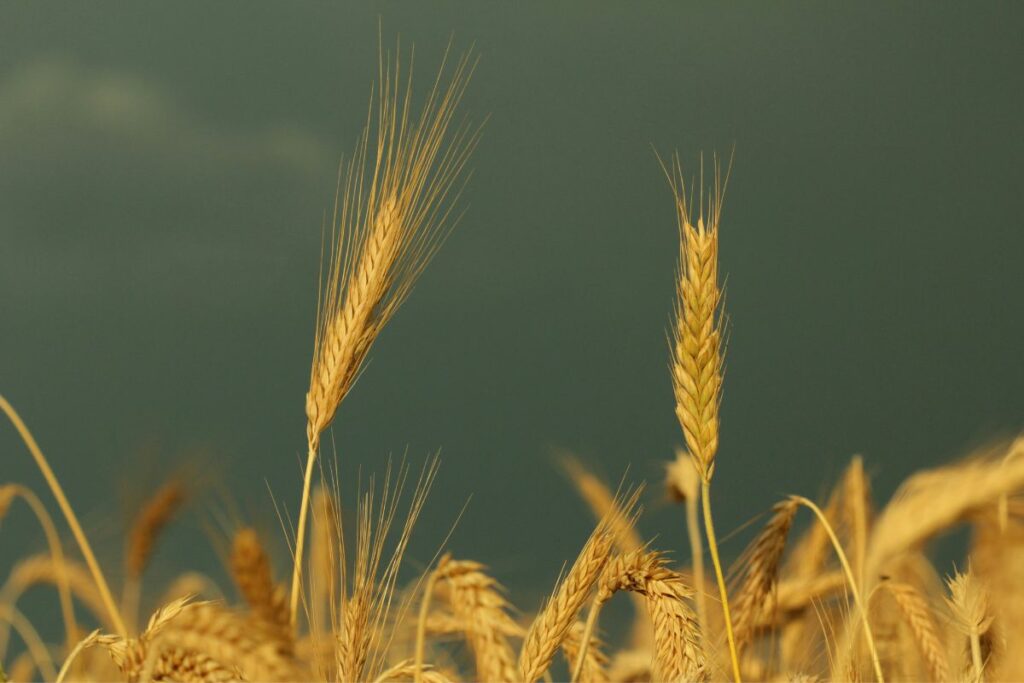Triticale is a common cereal used in food production – possessing many nutritional benefits that have proved nutritionally useful since its introduction in the late 19th century.
But what exactly is triticale, and what properties does it have?
What Is Triticale?
Triticale is a hybrid crop made from wheat and rye, produced throughout Scotland and Germany since the late 19th century.
When crossing the wheat with the rye, wheat is used as the ‘female’ component of the process, and rye is used as the ‘male’ – or pollen donor – resulting in a sterile offspring crop, that must then be treated with colchicine to induce ‘polyploidy’ – a process that enables the plant to reproduce itself.
Is It Genetically Modified?
As you can probably guess, this means that the crop is a genetic modification – however it is not categorized as being officially genetically engineered.
However, it is certainly considered a precursor to what would now be known as GMO (genetically modified organism) crops – and as such, has something of a negative reputation.
What Are The Benefits?
When it comes to benefits, there are many different angles, depending on which area you approach the subject from.
Business Sense
From a purely financial and – admittedly – a success rate point of view, the creation of triticale makes perfect sense.
This is because the combination of these two crops generally means that triticale has the yield potential and grain quality of wheat, and the tolerance to disease and environmental factors that rye naturally has.
This meeting of minds means that farmers can create crops that are both commercially viable, widely usable, and which give some sense of a guarantee regarding proposed earnings down the line.
Increasing Predictability
As mentioned, triticale is good for farmers, as it increases the predictability of the harvest.
Farming in general relies on a lot of knowhow to succeed, but also on a large amount of good luck and faith.
Removing these risk factors from the process can mean greater successes for farmers, and the avoidance of many of the negative consequences that can often mean failed harvests and financial ruin.
More Resilient
Triticale is also more resilient than wheat and other popular cereal crops, meaning that they can be grown in areas that are less forgiving and hospitable.
Triticale crops have become popular throughout Australia, which is famed for being a hostile environment for vegetation and crops, and has delivered several benefits for farmers looking to work previously unusable land.
What Can Triticale Be Used For?

The other promising thing about triticale is that it has numerous applications across a number of industries – which is one of the reasons that it has continually been pushed as the future of agriculture.
Milling & Baking
Like wheat and rye, triticale can be used for any number of baking and milling uses – used in things like bread, beer, sweet goods, and any number of other items that we all know and love.
While the present food market for triticale is poorly developed, it does hold potential for the future, as the fate of the current agricultural system seems under threat from all sides.
Feed Grain
Another use for triticale is as a feed grain for animals and livestock.
This is a much more sustainable way of feeding animals, and can ensure that they get all the nutrients they need from this specific grain.
In particular, the high energy content, and the amount of protein found in triticale means that it is nutritionally beneficial not just for animals, but for humans as well.
This too poses promising ideas as agriculture continues to develop over time.
Silage
Silage crops can be used to widen the window of a specific harvest, meaning other crops such as wheat, rye, barley, and oats can have longer to mature and grow, while still maintaining as much of their protein content as physically possible.
This helps to remove the age-old problem of quality vs yield – wherein the longer you leave a crop, the quality improves, but more of the plants begin to die out.
With this new system, harvesters can have the best of both worlds.
Forage
Triticale can also be used as a sturdy winter crop to protect the quality of the soil during the ‘off’ season.
Triticale is highly suitable for this role, as the natural resilience taken from the rye crops mean that it can grow and even thrive in cold conditions that would ruin most other crops.
This means that, not only can farmers protect the integrity of their soil during the winter period, but they can also create a usable, widely valuable crop that can be used for numerous different purposes.
What Is The Nutritional Value?

Of course, we have already mentioned the protein levels, but there are numerous other nutritional benefits to growing and consuming triticale as a cereal crop.
Amino Acids
Triticale is rich in amino acids, predominantly lysine, which can be useful for numerous bodily functions, including bolstering immune systems, establishing good gut health, improving muscle function, and reducing recovery time.
Amino acids also have injury-avoiding properties, meaning that the muscles do not become as fatigued or prone to injury as they normally can be.
There is also evidence to suggest that those rich in amino acids can heal from wounds and injuries at a faster pace.
Minerals & Nutrients
The mineral and nutrient content of triticale is as good, if not better (in some cases) than both wheat and rye, meaning that it is a great replacement should those crops ever become unviable in the future.
Protein
Of course, we have already mentioned protein, but there is something else regarding the levels that we can talk about – the way it has changed.
While older triticale crops showed signs of being inferior to other crops like wheat and rye, more recent developments have seen these levels increase to the same level – even higher in some instances.
This has coincided with the increased yield, which as mentioned above, means that crops can be left to mature and improve nutritionally, while avoiding dying out and remaining viable for harvest.
Are There Any Downsides?
As with anything, there are of course downsides to triticale – although these are comparable with other cereal crops currently in use.
Gluten Content
One downside is that they contain gluten, which means those with intolerances and illnesses (like Celiac disease) will have the same problems as with existing grains.
This means that, while it looks future-proof in a lot of ways, it still does not offer an answer for these existing problems surrounding gluten – and poses many of the same issues to sufferers as wheat and rye.
However, the future will undoubtedly provide answers to these issues too.
Final Thoughts
And there we have it, everything you need to know about triticale, what it is, and whether or not it is genetically modified.
It’s true that triticale has many benefits for humans, and can be a great addition to any nutritional, balanced diet.
So if you are looking for a good cereal to add to your diet, then why not give triticale a try?








